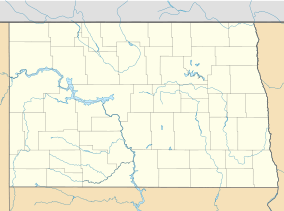Butte Saint Paul State Recreation Area facts for kids
Quick facts for kids Butte Saint PaulState Recreation Area |
|
|---|---|
| Location | Bottineau County, North Dakota, United States |
| Nearest city | Dunseith |
| Area | 51.23 acres (20.73 ha) |
| Elevation | 2,280 ft (690 m) |
| Designation | North Dakota state recreation area |
| Established | June 28, 1933 |
| Administrator | North Dakota Parks and Recreation Department |
| Website | Butte Saint Paul State Recreation Area |
Butte Saint Paul State Recreation Area is a fun outdoor spot in North Dakota. It's about 7 miles northwest of a town called Dunseith. This special area is home to a tall hill known as Butte Saint Paul. It's a great place to explore nature and learn about history.
Contents
Exploring Butte Saint Paul
This recreation area is centered around the Butte Saint Paul hill. The hill stands about 580 feet tall. At the very top, you'll find a stone monument. This monument is 12 feet high and has a special plaque.
Views from the Top
There's a circular trail that leads to the top of the hill. If you hike up, you'll get amazing views. You can see far across the Turtle Mountain region. It's a perfect spot for taking photos and enjoying the scenery.
The History of Butte Saint Paul
Butte Saint Paul has an interesting story that dates back many years. It's named after an important event that happened there.
A Winter Survival Story
In January 1850, a religious leader named Georges-Antoine Belcourt was traveling. He was with a small group when a big snowstorm hit. To stay safe, they dug into the snow right on top of the hill. They survived the blizzard thanks to this shelter.
How the Butte Got Its Name
After surviving the storm, Belcourt placed a wooden cross on the hill's summit. He named the peak Butte Saint Paul. This was because that day was a special holiday. It was the Feast of the Conversion of Saint Paul the Apostle.
Becoming a State Park
Many years later, in the 1930s, parts of the original wooden cross were found. To remember this important event, a stone monument was built. The area around the hill was then made into a state park. It officially became a state park on June 28, 1933. This protected area covers about 10 acres.


